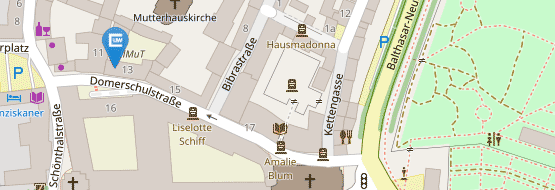Station V: Asinus & Lyra

There has always been a deep connection between harps or lyres and donkeys and the motif of a donkey playing a harp or lyre has been popular for centuries. For example a donkey plays a lyre on the famous Mesopotamian bull-headed lyre of Ur from the Early Dynastic Period (2550–2450 BC) housed at the Penn Museum of the University of Pennsylvania. Interestingly, the instrument the donkey is playing is an image of the actual instrument upon which the image appears. The donkey has been given hands rather than hooves in order to pluck the strings.
An Egyptian papyrus from Deir el-Medina, painted by tomb craftsmen of the 20th Dynasty or Ramisside period (1189–1077 BC) shows a donkey playing a harp in an ensemble of other animal musicians. Since the ensemble on the Turin Papyrus is similar to depictions of ladies playing in ensembles at banquets, it has been suggested that images of animals in this papyrus are caricatures criticizing the luxurious lifestyle of the nobility.
The image of a donkey playing the harp or lyre was very popular during the Middle Ages. The depictions are purportedly based on a fabel by the first century AD Roman fabulist Phaedrus, Asinus et lyra:
Asinus lyram vidit in prato iacentem; accessit et chordas temptavit ungula. Tactae, sonuere. “Bella res, mehercules, male cessit,” inquit, “quia artis sum nescius. Si hanc reperisset aliquis prudentior, divinis cantibus aures oblectasset.” Sic saepe ingenia calamitate intercidunt.
[A donkey spied a lyre lying in a meadow. He approached the instrument and strummed the strings with his hoof. The strings sounded at his touch. “This is a lovely thing, but by Hercules, how unfortunate,” he said, “because I know nothing of the art of music. If someone wiser than I had found it, our ears would have been delighted by heavenly melodies.” So is genius often wasted through some misfortune.]
The donkeys on medieval stone sculptures are often depicted with so-called harp psaltries—a harp-shaped instrument with two rows of strings and a soundbox or soundboard between the two rows. Some of these sculptures, for example that on the Notre-Dame de Chartres Cathedral (12th century), are so detailed, that it is possible to build playable reconstructions based on the sculpture. It has been suggested that medieval images of donkeys playing the harp or lyre are often found on the archways above cathedral entrances, because they have a moralistic message for those entering the cathedral. Many interpretations have been posited for the Asinus et lyra motif, for example: As the donkey recognized his shortcomings, so should we not aspire to rise above the station allotted to us in life.






